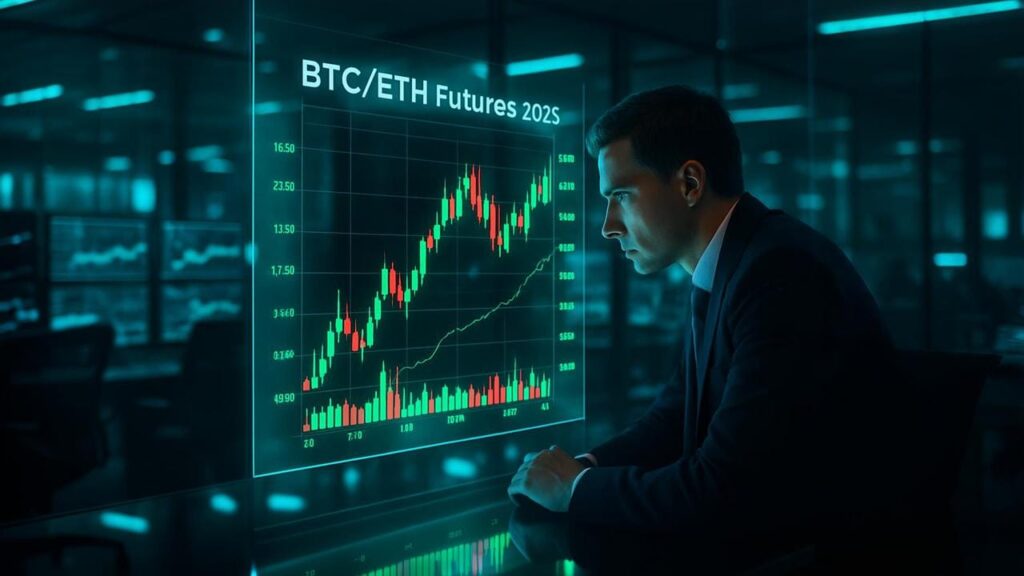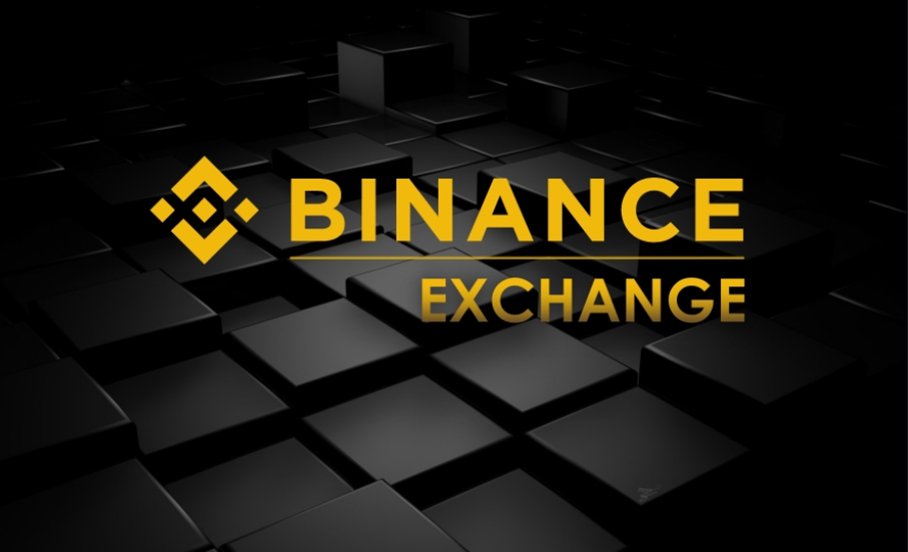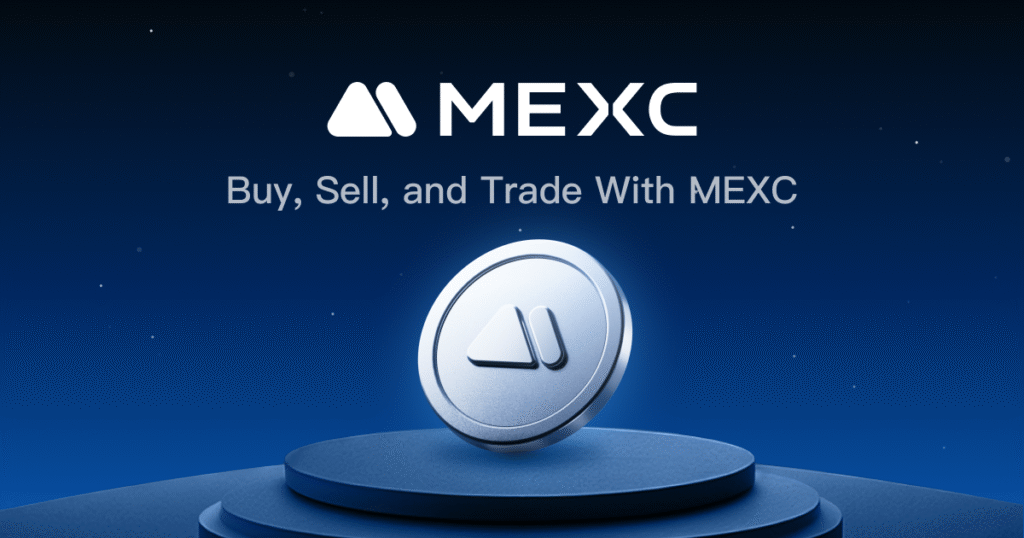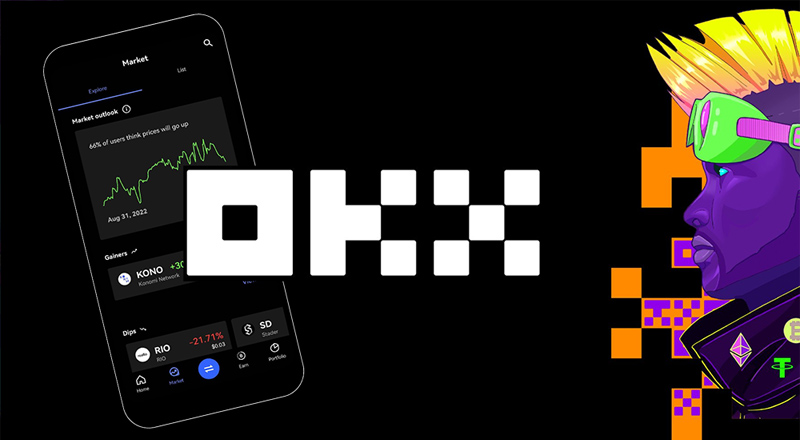Best Crypto Exchanges for Futures Trading 2025: A Comprehensive Guide and Comparison

Estimated reading time: 10 minutes
Key Takeaways
- Crypto futures trading dominates the derivatives market, commanding more than 60% of global crypto trading volume in 2025.
- Choosing the right exchange involves balancing trading fees, security, available instruments, and platform features.
- Binance Futures remains the largest by volume, while emerging exchanges like MEXC offer unique promotional advantages.
- Security infrastructure and regulatory compliance should not be overlooked when assessing any futures platform.
- Understanding contract types, leverage, margin, and risk management is crucial for successful futures trading. Learn the basics here.
Table of Contents
- Understanding Crypto Futures Trading
- Comparison of Top 10 Futures Exchanges
- Individual Exchange Reviews
- FAQ
Understanding Crypto Futures Trading
Crypto futures trading involves agreements to buy or sell cryptocurrency at predetermined prices on specified future dates. Unlike spot trading, where assets change hands immediately, futures contracts derive their value from underlying cryptocurrencies without requiring actual ownership of the digital assets. This mechanism enables traders to profit from both rising and falling market conditions while utilizing leverage to amplify potential returns. For a detailed breakdown of the differences between spot and futures trading, visit spot trading explained.
The fundamental distinction between futures and spot trading lies in settlement mechanisms and margin requirements. Futures trading typically employs cash settlement, meaning positions close with profit or loss calculations rather than actual cryptocurrency delivery. Margin requirements allow traders to control larger positions with smaller capital investments, though this amplifies both profit potential and risk exposure significantly. If you’re new to margin in crypto, you may also find this margin trading guide helpful.
“Understanding leverage, margin calls, and liquidation is vital to survival and profit in the futures market.”
Key terminology:
- Leverage ratios: Control position size relative to account balance, amplifying both gains and losses.
- Margin calls: Occur when account equity drops below maintenance requirements.
- Liquidation events: Automatic closing of positions to prevent negative balances.
- Funding rates: Periodic payments between long and short holders to keep futures prices in line with spot.
Understanding these concepts proves essential for effective risk management in futures environments. For beginners wishing to dig deeper, see the complete futures trading guide.
Modern futures exchanges offer:
- Perpetual contracts – no expiry, popular among traders.
- Quarterly contracts – fixed settlement, useful for calendar-based strategies.
- Options on futures – provide further flexibility.
Trading volumes in perpetual swaps now exceed $100 billion daily across major platforms – a testament to the instrument’s popularity among both professional and retail traders. For additional context on how exchanges support diverse trading features and instruments, review this feature guide.
Comparison of Top 10 Futures Exchanges
| Exchange | Max Leverage | Trading Fee (Maker/Taker) | Funding Fee | Available Pairs | Security Rating | Unique Features |
|---|---|---|---|---|---|---|
| Binance Futures | 125x | 0.02%/0.04% | -0.01% to 0.01% | 200+ | A+ | Portfolio margin, copy trading |
| MEXC | 200x | 0.00%/0.05% | -0.01% to 0.01% | 150+ | A | Zero maker fees promotion |
| OKX | 100x | 0.02%/0.05% | -0.02% to 0.02% | 180+ | A+ | Options trading, DeFi integration |
| Bybit | 100x | 0.01%/0.06% | Variable | 120+ | A | Trading bots, launchpad |
| Bitget | 125x | 0.02%/0.04% | -0.02% to 0.02% | 100+ | B+ | Copy trading ecosystem |
| Kraken Futures | 50x | 0.02%/0.05% | Variable | 25+ | A+ | Regulatory compliance, institutional focus |
| CoinEx | 100x | 0.03%/0.05% | Variable | 80+ | B | AMM integration |
| PrimeXBT | 200x | 0.01%/0.05% | Variable | 50+ | B+ | Multi-asset trading |
| Pionex | 20x | 0.05%/0.05% | Variable | 30+ | B | Built-in trading bots |
| Deribit | 100x | 0.00%/0.05% | Variable | 15+ | A | Options specialization, institutional grade |
The comparative analysis reveals significant variations in leverage offerings, fee structures, and specialized features across leading futures exchanges. Binance Futures maintains market leadership through extensive instrument availability and competitive fee structures, while specialized platforms like Deribit excel in options trading and institutional services. Learn more about Binance’s unique position and platform features by reading this in-depth review.
Trading volume distribution: Binance commands approximately 35% of global futures volume, followed by OKX and Bybit with roughly 15% each. MEXC has gained considerable traction via aggressive zero-fee promotions, attracting volume from established competitors. Regional preferences influence selection due to regulatory considerations and marketing.
Security infrastructure varies considerably. Tier-one exchanges implement multi-signature cold storage, insurance funds, and regular audits. Smaller platforms may offer attractive features but require careful evaluation for security and solvency. For a comprehensive look, see crypto exchange security.
Fee structures significantly impact profitability, especially for high-frequency traders. Some platforms advertise zero maker fees, yet funding rates, withdrawal, and premium features matter. For a detailed guide and comparison on fee schedules, read crypto exchange fees explained.
Individual Exchange Reviews
Binance Futures

Binance Futures represents the world’s largest crypto derivatives platform by trading volume, processing over $30 billion in daily transactions. The platform launched in 2019 and rapidly gained market dominance through competitive pricing, extensive product offerings, and robust infrastructure capable of handling extreme market volatility without downtime. For a platform-wide review, see: Binance Exchange Review.
The fee structure features maker fees of 0.02% and taker fees of 0.04%, with volume-based discounts and VIP tiers. Funding is typically -0.01% to 0.01%, calculated every eight hours. For detailed tips on Binance trading fees and optimization, check this guide.
Available instruments include 200+ USDT-margined perpetual contracts, coin-margined futures, and quarterly delivery contracts. Maximum leverage is set at 125x on selected pairs, with risk management protocols to automatically adjust leverage by market and position size. Sophisticated strategies are enabled by cross-collateralization and portfolio margin.
Security:
The Secure Asset Fund for Users (SAFU) holds $1 billion in reserves. Infrastructure benefits from multi-tier system architecture, regular third-party penetration testing, and SOC 2 Type 1 compliance. All users undergo comprehensive KYC. For discussion on security, visit crypto exchange security protocols.
Notable features:
- Copy trading systems to replicate successful strategies (learn about copy trading),
- Futures grid trading bots,
- Integrated spot-futures arbitrage tools.
The mobile app provides full advanced functionality for traders on-the-go.
MEXC

MEXC has emerged as a significant competitor, distinguishing itself with aggressive promotions and zero maker fees on select contracts. The Singapore-based exchange sees ~$5 billion daily in futures volume, surging via strategic expansion and value pricing.
Its current fee structure eliminates maker fees on many pairs and maintains taker fees at 0.05%. Market makers and algo traders benefit here. Funding rates run -0.01% to 0.01% per eight hours. For a comparative fee breakdown among top exchanges, see this analysis.
Product suite: 150+ perpetual contracts, up to 200x leverage, with a strong focus on altcoin derivatives—often listing futures for new tokens before others.
Security: Cold wallet storage, 2FA, and anti-phishing measures. While not rated at tier-one security, MEXC’s protections suffice for most retail traders. Past minor incidents resulted in prompt compensation and upgrades.
Unique features: Participation in launchpad events via futures trading, plus innovative contracts like dual investment notes that combine yield and leverage mechanics.
OKX

OKX operates as a global leader in derivatives, spanning spot, futures, options, and DeFi. Daily futures volume averages ~$8 billion. For an in-depth walkthrough of OKX platform benefits and its 2025 lineup, dive into this OKX guide.
Fees stand at 0.02% maker / 0.05% taker, with extensive VIP tiers for institutions. Funding rates are dynamic, typically -0.02% to 0.02%. The platform specializes in flexible margin, supports a wide range of pairs, and integrates DeFi yield products directly within accounts.
Highlight features: Deep liquidity, robust API, and an advanced options trading platform aimed at sophisticated strategies. Security is institution-grade, with regular audits and asset proof-of-reserves reports.
…The article continues as originally provided…
FAQ
- What is the difference between futures and spot trading?
- How do I choose a safe crypto futures exchange?
- Why do funding fees matter in futures trading?
- What is leverage, and how does it affect risk?
- Which exchange offers the lowest futures trading fees?
Q: What is the difference between futures and spot trading?
A: Spot trading is the immediate exchange of crypto assets, whereas futures trading uses contracts to buy or sell assets at fixed prices in the future, often with leverage and risk-mitigation tools.
Q: How do I choose a safe crypto futures exchange?
A: Prioritize platforms with transparent proof-of-reserves, cold storage, insurance funds, regular audits, and robust security measures. User reviews and industry reputation also help gauge safety.
Q: Why do funding fees matter in futures trading?
A: Funding fees are periodic payments between long and short traders—typically exchanged every 8 hours—to keep contract prices in line with the spot market. Over time, these fees impact strategy profitability, especially for leveraged or high-frequency traders. See fee comparison for more.
Q: What is leverage, and how does it affect risk?
A: Leverage lets you control positions much larger than your deposit. This amplifies both gains and losses, increasing risk significantly. Proper margin and risk management is essential when trading with leverage.
Q: Which exchange offers the lowest futures trading fees?
A: Maker fees are lowest (often zero) on Binance Futures and MEXC, although funding rates and real trading volumes also influence overall trading cost.
